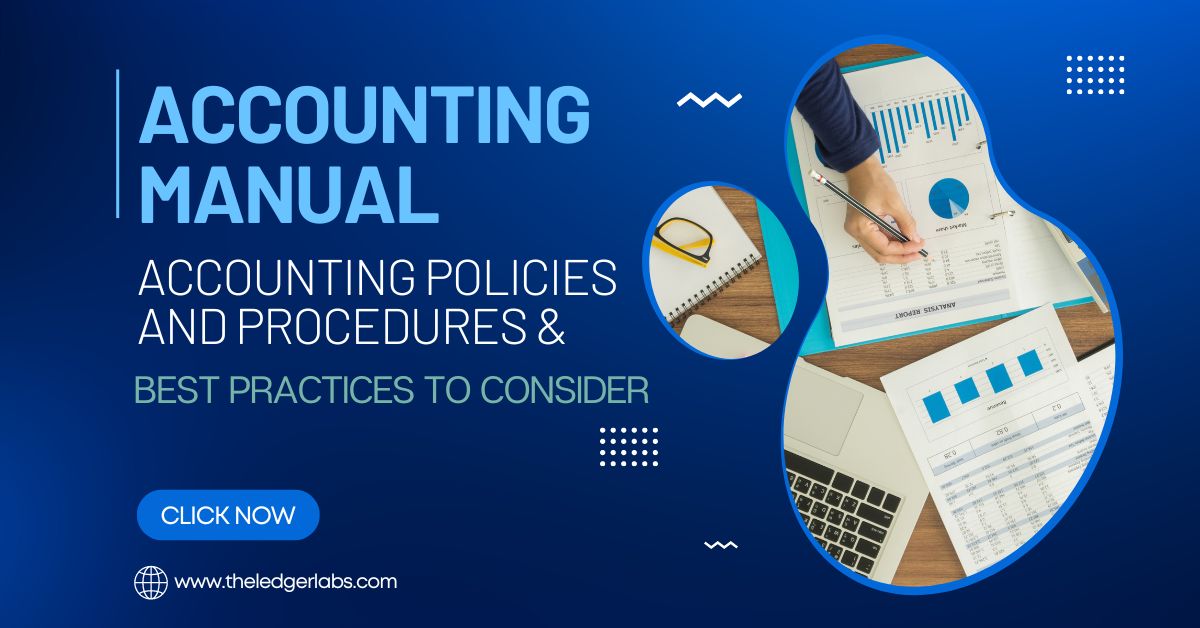Any organization big or small surely needs an efficient accounting process manual. However, most organizations create it only for the namesake. Without knowing how important it is for ensuring the smooth running of their business. This article guides readers on how important the accounting manual is in ensuring effective accounting policies and procedures. And best practices for an organization.
No matter whether you are a small, medium, or big business organization. You will always require a robust accounting system to look after the financial functioning of the firm. An accounting manual, therefore, appears to be one of the most important documents. That you must keep handy as a business organization. When you have this manual ready, you have the access to accounting policies and procedures. And the best practices to make your accounting functions easy to carry out.
What Does A Typical Accounting Manual Look Like?
An accounting manual is a document that specifies the accounting process and procedures that any organization must follow. When business organizations prepare the manual, it gives the employees, especially the accounting professionals, access to the company’s accounting policies, principles, procedures, guidelines, and standards.
There are various online templates available to help businesses prepare a manual easily. These are designed by experts per the Generally Accepted Accounting Principles (GAAP), which works in compliance with the Sarbanes-Oxley (SOX) Section 404. Thus, an accounting manual includes information on:
- Scope and purpose of the business organization
- Structure of the accounting department
- List of accounting policies
- Required accounting resources
In addition, it also helps establish core accounting processes and subprocesses for the firms to follow.
Need For Accounting Policies & Procedures
Every company is unique in dealing with its accounts. However, when new joiners begin their journey with these organizations, they are hardly aware of what the firm follows. The manual lets them know the rules and standards of the company and helps them to work accordingly as an employee.
The US Securities and Exchange Commission (SEC) and the Public Company Accounting Oversight Board (PCAOB) consider accounting policies and procedures as the major component of internal controls that businesses put in place. In addition, it also helps monitor the audit processes, security concerns, etc. Thus, an accounting procedure manual can be said to be a document that helps organizations stick to ethics and keep a watch on what fair and unfair is conducted within a business enterprise.
In short, the accounting policies and procedures take care of everything from ensuring the businesses follow ethics and standards to playing fair in the sector they work in and fulfilling the reporting needs with utmost accuracy so that the stakeholders could rely on the details provided via the report for making fruitful business and investing decisions.
Contact Our Accounting Experts

Best Practices For Developing An Effective Accounting Manual
Now that you are aware of the importance of the accounting process manual, specifying accounting policies and procedures, and best practices for developing it is the next thing to explore. Certain factors determine how effective and efficient an accounting manual is for a firm. Thus, including a few things becomes a must for preparing an accounting procedure manual that could easily be read, understood, and interpreted by professionals.
Here are a few best practices to undertake to ensure the policies and procedures created in the accounting manual are up to the mark and in the best interest of the firm using it. Let’s explore those few basic things to consider:
1. Identifying risks
Strengths are something that everyone recognizes with pride. However, in the rush of flaunting their positive sides, businesses forget to focus on their negative aspects. The accounting manual is a document that should be developed, keeping in mind the risks that might hamper the accounting procedures of an organization. Hence, the entities must check the existing policies and procedures to identify areas that need improvement. In addition, there are points of fraud and errors, which must be detected to put in place the controls as required. Identifying the risks and loopholes in the accounting system helps professionals come up with something robust to avert risks as and when required so that businesses continue to run smoothly.
2. Checks and balances awareness
Having a proper structure in place is yet another requirement of any organization. Checks and balances are a must to ensure. For example, if a person receiving invoices from vendors and suppliers is the same person who is responsible for making timely payments to them, it removes the chances of delayed payment from your end. Hence, keeping your structure smooth and in accordance with the business’s requirements is recommended. Remember, complex does not mean better. Keep the checks and balances formula active while framing the accounting policies and procedures in the manual. This will not only let you detect loopholes but also resolve concerns.
3. Grievance tracking and monitoring
Have an efficient complaint-handling system in your business organization. When the policies and procedures are made active. There are chances that employees and staff would come across some defects in the system. It is recommended that you be open to feedback and criticism. This will let you develop and keep improving your accounting manual from time to time. Plus, it would help your employees trust you even more as they feel heard and valued. In short, this addition to the best practices will also strengthen your employer-employee relationship.
Final Words
An accounting manual is an important document for any organization, big or small. It must be developed in compliance with the laws and regulations of the regions where the concerned organizations operate. Now that you all understand. Why the accounting manual should be developed and how the policies and procedures keep each one of you working in the organization on the same page. Your business organization will surely become one of the most efficiently running business entities across the globe.
The only thing you should make sure of is to follow those best practices. Where identifying your loopholes would mean having a more robust system of accounting and internal controls. So, effective accounting policies, procedures, and best practices would mean efficient and easy-to-read and interpret accounting manuals.
At Ledger Labs, all our accounting services comply with the current regulations and standards. With us onboard, you will never have to worry about the legal aspects of the accounting process. We will deal with it all. For more details, connect today.







